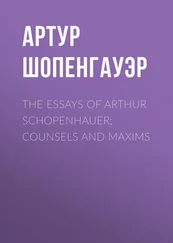Counseling and Psychotherapy
Здесь есть возможность читать онлайн «Counseling and Psychotherapy» — ознакомительный отрывок электронной книги совершенно бесплатно, а после прочтения отрывка купить полную версию. В некоторых случаях можно слушать аудио, скачать через торрент в формате fb2 и присутствует краткое содержание. Жанр: unrecognised, на английском языке. Описание произведения, (предисловие) а так же отзывы посетителей доступны на портале библиотеки ЛибКат.
- Название:Counseling and Psychotherapy
- Автор:
- Жанр:
- Год:неизвестен
- ISBN:нет данных
- Рейтинг книги:4 / 5. Голосов: 1
-
Избранное:Добавить в избранное
- Отзывы:
-
Ваша оценка:
- 80
- 1
- 2
- 3
- 4
- 5
Counseling and Psychotherapy: краткое содержание, описание и аннотация
Предлагаем к чтению аннотацию, описание, краткое содержание или предисловие (зависит от того, что написал сам автор книги «Counseling and Psychotherapy»). Если вы не нашли необходимую информацию о книге — напишите в комментариях, мы постараемся отыскать её.
Counseling and Psychotherapy — читать онлайн ознакомительный отрывок
Ниже представлен текст книги, разбитый по страницам. Система сохранения места последней прочитанной страницы, позволяет с удобством читать онлайн бесплатно книгу «Counseling and Psychotherapy», без необходимости каждый раз заново искать на чём Вы остановились. Поставьте закладку, и сможете в любой момент перейти на страницу, на которой закончили чтение.
Интервал:
Закладка:
Free Association and Dream Analysis
Free association is synonymous with Freud and the traditional psychoanalysis approach. In free association, clients are invited to relate whatever comes into their mind during the session without self-censorship. The counselor uses clarification and confrontation to help the client analyze unconscious or latent content in dreams, fantasies, or enactments that appear in the expressed content (Lothane, 2009). Freud addressed the method of free association heavily in his dream analysis work. Traditional psychoanalysis places a strong emphasis on dreams as keys to the unconscious and wish fulfillments shown in the mind as symbols. The manifest content of the dream is the dream as it is recalled by the client, and the latent content is the actual meaning of the dream once analyzed (Diena, 2014).
Free association and dream work are still evident techniques in modern psychodynamic approaches, although they are applied differently. For example, the psychodynamic counselor discusses the importance of the client paying attention to and suspending judgment of self while the counselor resists understanding too quickly (Scarfone, 2018). One way a modern psychodynamic counselor may do this is by asking the client to journal. Journaling has been widely used for its therapeutic aspects; however, modern psychodynamic counselors utilize journaling for its stream of consciousness, flow writing and free writing, expressive writing, and dream exploration (Haertl, 2008). Within a modern psychodynamic approach, the counselor and client work collaboratively and focus on developing insight. By using journaling as a means of free association and dream analysis, modern psychodynamic counselors gain rich sources of information about the client’s psyche and perception that counselors will use in the here and now (Haertl, 2008).
Brief Intervention Strategies
Brief Psychodynamic Theory
Traditional psychoanalytic theory focuses on unconscious processes as they are manifested in the client’s present behavior. Psychodynamic approaches additionally emphasize client self-awareness and understanding of the influences of the past on present behavior, and the correction of the client’s distortions is often the primary focus of therapeutic treatment (Thomas, 2008). In its brief form, a psychodynamic approach enables the client to examine unresolved conflicts and symptoms that arise from past dysfunctional relationships that manifest themselves in maladaptive needs and desires. The primary goal is to estimate what may have happened in the past that created a current issue. There is generally one major focus in the sessions, and although free association is not used so that the generation of additional topics is avoided, clients are still encouraged to explore issues that have tangential relation to the primary problem (Haggerty, 2013).
The two primary aims of this approach are (a) to help the client understand the connection between their presenting symptoms and what is happening in their relationships by identifying a core, unconscious, repetitive pattern of relating that becomes the focus of the therapy; and (b) to encourage the client’s capacity to reflect on their own state of mind and so enhance their ability to manage interpersonal difficulties. The counselor assumes that changes will happen rapidly and that a short intervention will begin a long change process that continues beyond counseling. The number of sessions varies from one approach to another, but brief psychodynamic counseling relies on the estimated time that is needed to achieve the counseling goals as determined at the beginning of counseling and generally does not extend beyond 16 sessions (Lemma et al., 2011).
The brief psychodynamic approach is conceptualized in three phases. In the initial phase, the client is engaged in the counseling process, and by providing structure, direction, and confrontation, the counselor engages the client in assessing current difficulties and defenses. In the middle phase, the counselor focuses on one problem or pattern, and, using a variety of interpretation methods, such as dynamic interpretation, resistance interpretation, transference interpretation, or dream interpretation, the client develops an awareness of the presentation of symptoms related to the identified problem. In the ending phase, the counselor and client cooperatively review the material, evaluate progress, and transition toward the end of treatment by focusing on the conscious and unconscious meaning of separation from the counselor following termination (Lemma et al., 2011).
Psychodynamic counseling generally involves developing a therapeutic alliance and addressing defense mechanisms and intrapsychic conflicts in an attempt to show the multiple conscious and unconscious factors that influence a client’s symptoms and behaviors. A current example of psychoanalytic evolution is the introduction of psychodynamic interpersonal therapy and interpersonal psychotherapy. Each approach has a basis in classical psychoanalysis but can be applied in a brief context and has a specific set of techniques that uniquely define it.
Expressive Psychotherapy
Expressive psychotherapy uses similar techniques to those used in psychoanalysis, although there is more focus on the client’s problems and external life. The counselor’s neutrality may need to be suspended when the client enters a crisis, but the counselor reassumes neutrality as soon as the crisis has been appropriately addressed. Clients are usually seen face to face instead of in the traditional couch/ chair context and are seen far less frequently than in classical analysis (weekly or bimonthly rather than biweekly). Although the results of expressive therapy are expected to be less extensive than the results of psychoanalysis, both forms of treatment are assumed to be capable of producing structural personality change (Bush & Meehan, 2011).
Object Relations and Attachment
Object relations theory suggests that internal representations of oneself and other people acquired in childhood are later replicated in adult relationships. To establish a healthy relationship with others, the client must examine how self-esteem, self-concept, and unhealthy attachments are impeding healthy social support. Psychologist John Bowlby developed this concept further with his attachment theory, which suggests that relationships with primary caregivers during early development influence emotional and behavioral responses across the life span through a behavioral system that influences expectations of both self and others in close relationships (Bowlby, 1969).
Self-Psychology
Self-psychology was founded by Heinz Kohut in the 1970s on the premise that the self is the essence of a person’s being and consists of sensations, feelings, and self-image. Although this approach is aligned in many ways with psychoanalysis, a significant conceptual difference is the self as the dynamic foundation for personality that shapes the client’s establishment of boundaries and the differentiations of the self, rather than a system of drives and motivations (Riker, 2013).
Self-psychology suggests that the quality of the relationship between a child and a caregiver has a significant role in the development of a healthy and cohesive personality structure. When a child does not have an appropriate self-object differentiation because of early life trauma, the child is unable to separate the self from the object (in this case, the traumatic experience). The trauma then remains unprocessed and stays in the unconscious as a core negative experience, which derails normal development into adulthood. This would be expressed in the adult client as preoccupations with negative thinking, depression, suicidal thinking, attention deficits, hyperactivity, self-mutilation, and eating disorders (Rowe, 2013).
Читать дальшеИнтервал:
Закладка:
Похожие книги на «Counseling and Psychotherapy»
Представляем Вашему вниманию похожие книги на «Counseling and Psychotherapy» списком для выбора. Мы отобрали схожую по названию и смыслу литературу в надежде предоставить читателям больше вариантов отыскать новые, интересные, ещё непрочитанные произведения.
Обсуждение, отзывы о книге «Counseling and Psychotherapy» и просто собственные мнения читателей. Оставьте ваши комментарии, напишите, что Вы думаете о произведении, его смысле или главных героях. Укажите что конкретно понравилось, а что нет, и почему Вы так считаете.












